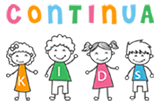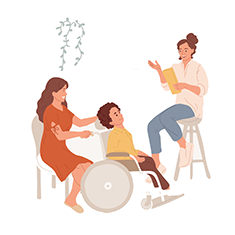Autism Spectrum Disorder
As of 2025, the Centers for Disease Control and Prevention (CDC) reports that approximately 1 in 31 children aged 8 years in the United States have been identified with Autism Spectrum Disorder (ASD), equating to a prevalence of about 3.2%. This marks an increase from previous years; for instance, in 2020, the prevalence was estimated at 1 in 36 (2.8%).
The rise in diagnosed cases is largely attributed to improved screening, broader diagnostic criteria, and increased awareness, rather than a true surge in incidence.
Globally, the World Health Organization (WHO) estimates that about 1 in 100 children are diagnosed with ASD, though this figure may vary due to differences in diagnostic practices and reporting across countries.
In summary, while the global prevalence of ASD remains around 1%, the United States has observed a higher rate of approximately 3.2% among 8-year-old children, reflecting enhanced detection and diagnostic efforts.
Continua Kids is India’s one of the holistic developmental centers where the best autism specialists facilitate personalized therapies for specially-abled kids.
What is Autism Spectrum Disorder (ASD)?
Autism spectrum disorder (ASD) is a developmental delay in children that can lead to significant social, communication, and behavioral issues. The child may develop social anxiety with age.
Specially abled children may communicate, interact, behave, and learn in ways that most people do not. The child’s learning, thinking, and problem-solving abilities can range from gifted to severely challenged.
Some children are able to quickly catch up with their peers, while others may take several years
Types of Autism Spectrum Disorder
- Autistic disorder (classic autism).
- Asperger’s disorder (Asperger syndrome).
- Pervasive developmental disorder not otherwise specified (PDD-NOS).
- Childhood disintegrative disorder (CDD)
Book An Appointment
Signs and Symptoms of ASD
Autism symptoms are detectable from 18 months or even younger. One may not need to worry until the child lags significantly in a particular skill they are supposed to know at their age. The problems may arise in the following domains.
Socialization and Communication:
- Does not participate in simple interactive games
- Avoids eye contact or makes limited contact. They tend to look the other way or down.
- Does not understand emotions like sad or hurt(At two to three years of age)
- Confusion in facial expressions like smile, angry, sad, surprised etc.
- Had difficulty understanding gestures one year ago or more.
- Babbling or not speaking by one year of age.
- They do not look where they are pointed.
Behavioral Skills:
- Does a task repeatedly or say the same words and phrases frequently.
- Focuses on one object and behaves obsessively.
- They feel uncomfortable with minor changes in routine.
- They get frequent mood swings and act impulsively.
- They cannot explain what they want and feel stressed.
- They might get annoyed if not allowed to do something.
- Unusual body movements.
Other Difficulties:
- Sleep deprivation
- Eating disorder
- Language development delay
- Delay in acquiring cognitive skills
- Seizures
- Feeling fatigued
Diagnosis for Autism Spectrum Disorder
First stage – Developmental Screening and Monitoring : It starts with simple questionnaires about a child’s thinking abilities, behaviors, emotions, physical activities and others. The monitoring is done at 9, 18, 24, 30 months of age.
Second Stage – Comprehensive Developmental Evaluation : It is an in-depth diagnosis done for a specific problem. The test is more detailed and follows a structure. A team of specialists do this evaluation to identify specific issues and determine if the child with ASD needs special therapy.
What We Do For ASD At Continua Kids?
We have the best team of certified professionals for various therapies and autism specialists who understand the needs of children in the autism spectrum and hold the sessions in a fun, engaging and comfortable environment. The child doesn’t feel pressured at any stage.
Although the diagnosis is mostly by history and clinical examination yet the diagnostic tests may be required like:
- Facilitating small classrooms for each child to receive one-on-one attention from the therapist.
- Participating in small group learning activities.
- Focussed learning activities for at least 25 hours per week at the appropriate developmental stage for the child.
- Providing organized tasks, routine, visual cues, and clearly defined boundaries to reduce distractions.
- Assisting the child in adapting and maintaining learned skills in new situations and settings.
- Scientific approaches to reduce challenging behaviors like aggression and tantrums.
- Counseling sessions for parents and caregivers.
We give importance to comprehensive treatments and so our intervention methods for autism treatment are based on the developmental aspects. If you have more questions about ASD and need guidance helping your child with ASD, visit our center today or book an online consultation.
Therapy
CONTINUA Kids is unique in its own way as it provides all the scientifically proven, individualized therapies that are required for special children under one roof.
FAQ'S
Is it possible for children with ASD to become normal as they grow?
With proper diagnosis and therapies, the symptoms may be minimized to a level where the child is able to function normally. Mild ASD symptoms are easily manageable. The child may or may not grow out of it completely.
Who should I consult for my child on the autism spectrum?
You can see an autism specialist like a developmental pediatrician or a pediatric neurologist for consultation on autism spectrum disorder.
How do I teach my child on the Autism spectrum to talk?
It is best to take professional help. But you can practise talking to your kid in different ways at home. Use one word or one syllable instead of full phrases.
Can my child develop autism after early childhood?
Autism is often due to genetic abnormalities. Hence it is an inborn trait. Autism symptoms may show up after a few months of birth, but it cannot develop in teens or adulthood.
How to potty train my child with ASD?
Create a routine and encourage your child to follow it. For example, every morning, make them sit on the potty if they don’t get the urge. For more information on this topic, you can watch our video





